#its just a performance of an ensemble piece and some solos and duets students are doing
Explore tagged Tumblr posts
Text
cuts the crust off my sandwich by hand bc mom didnt do it for me
#also theres a bunch of drama in the musical theater program in my school#so our director and choreographer are stepping down after this mini-performance#its just a performance of an ensemble piece and some solos and duets students are doing#very student led but the ensemble piece is very hands-on with the staff#so the director and choreographer are stepping down after this performance next week#theres been a lot of behind the scenes drama#according to them who completely LIED about everything the vocal director (my choir teacher) told them#so first we havent decided which musical the school is hosting this year#theres been difficulties finding ones with full pits that we actually want to do#i wanted little shop of horrors but alas. rejected. so many complications in that one#and theyve been acting up#they're making it an “us” issue when its very much THEM causing the issues#they didnt have choreography done UNTIL my friends wrote a letter about all the problems going on#and the choreographer pulled me and a few others and made us sing the ensemble piece by themselves#thinking we didnt know it when we DID#and it isnt even his place to BEGIN WITH to fuck with the music for almost the ENTIRE REHEARSAL when we hadnt even DONE CHOREOGRAPHY#we'd done a bit of it and then he SCRAPPED IT#because it was TOO HARD#when it shouldve been dealt with BEFORE THE PROGRAM BEGAN#so my first musical theater thing is going GREAT
1 note
·
View note
Photo

Lee Konitz, jazz alto saxophonist who was a founding influence on the ‘cool school’ of the 1950s died aged 92
The music critic Gary Giddins once likened the alto saxophone playing of Lee Konitz, who has died aged 92 from complications of Covid-19, to the sound of someone “thinking out loud”. In the hothouse of an impulsive, spontaneous music, Konitz sounded like a jazz player from a different habitat entirely – a man immersed in contemplation more than impassioned tumult, a patient explorer of fine-tuned nuances.
Konitz played with a delicate intelligence and meticulous attention to detail, his phrasing impassively steady in its dynamics but bewitching in line. Yet he relished the risks of improvising. He loved long, curling melodies that kept their ultimate destinations hidden, he had a pure tone that eschewed dramatic embellishments, and he seemed to have all the time in the world. “Lee really likes playing with no music there at all,” the trumpeter Kenny Wheeler once told me. “He’ll say ‘You start this tune’ and you’ll say ‘What tune?’ and he’ll say ‘I don’t care, just start.’”
Born in Chicago, the youngest of three sons of immigrant parents – an Austrian father, who ran a laundry business, and a Russian mother, who encouraged his musical interests – Konitz became a founding influence on the 1950s “cool school”, which was, in part, an attempt to get out of the way of the almost unavoidable dominance of Charlie Parker on post-1940s jazz. For all his technical brilliance, Parker was a raw, earthy and impassioned player, and rarely far from the blues. As a child, Konitz studied the clarinet with a member of Chicago Symphony Orchestra and he had a classical player’s silvery purity of tone; he avoided both heart-on-sleeve vibrato and the staccato accents characterising bebop.
However, Konitz and Parker had a mutual admiration for the saxophone sound of Lester Young – much accelerated but still audible in Parker’s phrasing, tonally recognisable in Konitz’s poignant, stately and rather melancholy sound. Konitz switched from clarinet to saxophone in 1942, initially adopting the tenor instrument. He began playing professionally, and encountered Lennie Tristano, the blind, autocratic, musically visionary Chicago pianist who was probably the biggest single influence on the cool movement. Tristano valued an almost mathematically pristine melodic inventiveness over emotional colouration in music, and was obsessive in its pursuit. “He felt and communicated that music was a serious matter,” Konitz said. “It wasn’t a game, or a means of making a living, it was a life force.”
Tristano came close to anticipating free improvisation more than a decade before the notion took wider hold, and his impatience with the dictatorship of popular songs and their inexorable chord patterns – then the underpinnings of virtually all jazz – affected all his disciples. Konitz declared much later that a self-contained, standalone improvised solo with its own inner logic, rather than a string of variations on chords, was always his objective. His pursuit of this dream put pressures on his career that many musicians with less exacting standards were able to avoid.
Konitz switched from tenor to alto saxophone in the 1940s. He worked with the clarinettist Jerry Wald, and by 20 he was in Claude Thornhill’s dance band. This subtle outfit was widely admired for its slow-moving, atmospheric “clouds of sound” arrangements, and its use of what jazz hardliners sometimes dismissed as “front-parlour instruments” – bassoons, French horns, bass clarinets and flutes.
Regular Thornhill arrangers included the saxophonist Gerry Mulligan and the classically influenced pianist Gil Evans. Miles Davis was also drawn into an experimental composing circle that regularly met in Evans’s New York apartment. The result was a series of Thornhill-like pieces arranged for a nine-piece band showcasing Davis’s fragile-sounding trumpet. The 1949 and 1950 sessions became immortalised as the Birth of the Cool recordings, though they then made little impact. Davis was the figurehead, but the playing was ensemble-based and Konitz’s plaintive, breathy alto saxophone already stood out, particularly on such drifting tone-poems as Moon Dreams.
Konitz maintained the relationship with Tristano until 1951, before going his own way with the trombonist Tyree Glenn, and then with the popular, advanced-swing Stan Kenton orchestra. Konitz’s delicacy inevitably toughened in the tumult of the Kenton sound, and the orchestra’s power jolted him out of Tristano’s favourite long, pale, minimally inflected lines into more fragmented, bop-like figures. But the saxophonist really preferred small-group improvisation. He began to lead his own bands, frequently with the pianist Ronnie Ball and the bassist Peter Ind, and sometimes with the guitarist Billy Bauer and the brilliant West Coast tenor saxophonist Warne Marsh.
In 1961 Konitz recorded the album Motion with John Coltrane’s drummer Elvin Jones and the bassist Sonny Dallas. Jones’s intensity and Konitz’s whimsical delicacy unexpectedly turned out to be a perfect match. Konitz also struck up the first of what were to be many significant European connections, touring the continent with the Austrian saxophonist Hans Koller and the Swedish saxophone player Lars Gullin. He drifted between playing and teaching when his studious avoidance of the musically obvious reduced his bookings, but he resumed working with Tristano and Marsh for some live dates in 1964, and played with the equally dedicated and serious Jim Hall, the thinking fan’s guitarist.
Konitz loved the duo format’s opportunities for intimate improvised conversation. Indifferent to commercial niceties, he delivered five versions of Alone Together on the 1967 album The Lee Konitz Duets, first exploring it unaccompanied and then with a variety of other halves including the vibraphonist Karl Berger. The saxophonist Joe Henderson and the trombonist Marshall Brown also found much common ground with Konitz in this setting. Konitz developed the idea on 1970s recordings with the pianist-bassist Red Mitchell and the pianist Hal Galper – fascinating exercises in linear melodic suppleness with the gently unobtrusive Galper; more harmonically taxing and wider-ranging sax adventures against Mitchell’s unbending chord frameworks.
Despite his interest in new departures, Konitz never entirely embraced the experimental avant garde, or rejected the lyrical possibilities of conventional tonality. But he became interested in the music of the pianist Paul Bley and his wife, the composer Carla Bley, and in 1987 participated in surprising experiments in totally free and non jazz-based improvisation with the British guitarist Derek Bailey and others.
Konitz also taught extensively – face to face, and via posted tapes to students around the world. Teaching was his refuge, and he often apparently preferred it to performance. In 1974 Konitz, working with Mitchell and the alto saxophonist Jackie McLean in Denmark, recorded a brilliant standards album, Jazz à Juan, with the pianist Martial Solal, the bassist Niels-Henning Orsted Pedersen and the drummer Daniel Humair. That year, too, Konitz released the captivating, unaccompanied Lone-Lee with its spare and logical improvising, and a fitfully free-funky exploration with Davis’s bass-drums team of Dave Holland and Jack DeJohnette.
In the 1980s, Konitz worked extensively with Solal and the pianist Michel Petrucciani, and made a fascinating album with a Swedish octet led by the pianist Lars Sjösten – in memory of the compositions of Gullin, some of which had originally been dedicated to Konitz from their collaborations in the 1950s. With the pianist Harold Danko, Konitz produced music of remarkable freshness, including the open, unpremeditated Wild As Springtime recorded in Glasgow in 1984. Sometimes performing as a duo, sometimes within quartets and quintets, the Konitz/Danko pairing was to become one of the most productive of Konitz’s musical relationships.
Still tirelessly revealing how much spontaneous material could be spun from the same tunes – Alone Together and George Russell’s Ezz-thetic were among his favourites – by the end of the 1980s Konitz was also broadening his options through the use of the soprano saxophone. His importance to European fans was confirmed in 1992 when he received the Danish Jazzpar prize. He spent the 1990s moving between conventional jazz, open-improvisation and cross-genre explorations, sometimes with chamber groups, string ensembles and full classical orchestras.
On a fine session in 1992 with players including the pianist Kenny Barron, Konitz confirmed how gracefully shapely yet completely free from romantic excess he could be on standards material. He worked with such comparably improv-devoted perfectionists as Paul Motian, Steve Swallow, John Abercrombie, Marc Johnson and Joey Baron late in that decade. In 2000 he showed how open to wider persuasions he remained when he joined the Axis String Quartet on a repertoire devoted to 20th-century French composers including Erik Satie, Claude Debussy and Maurice Ravel.
In 2002 Konitz headlined the London jazz festival, opening the show by inviting the audience to collectively hum a single note while he blew five absorbing minutes of typically airy, variously reluctant and impetuous alto sax variations over it. The early 21st century also heralded a prolific sequence of recordings – including Live at Birdland with the pianist Brad Mehldau and some structurally intricate genre-bending with the saxophonist Ohad Talmor’s unorthodox lineups.
Pianist Richie Beirach’s duet with Konitz - untypically playing the soprano instrument - on the impromptu Universal Lament was a casually exquisite highlight of Knowing Lee (2011), an album that also compellingly contrasted Konitz’s gauzy sax sound with Dave Liebman’s grittier one.
Konitz was co-founder of the leaderless quartet Enfants Terribles (with Baron, the guitarist Bill Frisell and the bassist Gary Peacock) and recorded the standards-morphing album Live at the Blue Note (2012), which included a mischievous fusion of Cole Porter’s What Is This Thing Called Love? and Subconscious-Lee, the famous Konitz original he had composed for the same chord sequence. First Meeting: Live in London Vol 1 (2013) captured Konitz’s improv set in 2010 with the pianist Dan Tepfer, bassist Michael Janisch and drummer Jeff Williams, and at 2015’s Cheltenham Jazz Festival, the old master both played and softly sang in company with an empathic younger pioneer, the trumpeter Dave Douglas. Late that year, the 88-year-old scattered some characteristically pungent sax propositions and a few quirky scat vocals into the path of Barron’s trio on Frescalalto (2017).
Cologne’s accomplished WDR Big Band also invited Konitz (a resident in the German city for some years) to record new arrangements of his and Tristano’s music, and in 2018 his performance with the Brandenburg State Orchestra of Prisma, Gunter Buhles’s concerto for alto saxophone and full orchestra, was released. In senior years as in youth, Konitz kept on confirming Wheeler’s view that he was never happier than when he didn’t know what was coming next.
Konitz was married twice; he is survived by two sons, Josh and Paul, and three daughters, Rebecca, Stephanie and Karen, three grandchildren and a great-grandchild.
• Lee Konitz, musician, born 13 October 1927; died 15 April 2020
Daily inspiration. Discover more photos at http://justforbooks.tumblr.com
13 notes
·
View notes
Text
“The conductor…in the power he has over others…it is in his interest as a human being, as well as that of his musical achievements, to resist the temptation to misuse it. Tyranny can never bring to fruition artistic-or for that matter human- gifts; subordination under a despot does not make for joy in one’s music-making. Intimidation deprives the musician of the full enjoyment of his talent and proficiency. Yet I should certainly not want to impugn the employment of earnest severity or even the occasional borrowing of the Bolt of Zeus; the latter if the hand knows how to wield it, can in exceptional situations bring surprisingly good results. Severity is a legitimate even indispensable means of dealing with people...”
Bruno Walter
In my Summer of 42 (years), I was a college freshman…again. With neither Mexican weed nor dormitory hijinks to distract me, I worked through the full Brooklyn College Core Curriculum and a handful of music courses. My degree plan also required an ensemble each semester. When the Assistant Dean interviewed me, he looked over my CV and immediately suggested their Jazz Band. After hearing them, I chose a contemporary music ensemble founded by a composition professor. Fall semester, she was on sabbatical and a trumpet prof, Juilliard guy and veteran freelancer, ran the class. To begin, he sat everyone in a circle and asked us to play “Happy Birthday" in hocket. Most of the class was unsure of the melody and some also thought it a stupid idea. With our nonstandard instrumentation, we massacred Second Viennese School composers for the rest of the term.
Spring term, the founder returned. She was just over five feet tall, brown-skinned, with narrow shoulders and mineshaft dark eyes. When she listened, her head nodded while bottomless eyes fixed on you. Raised in a distressed country, her life moved from prodigy to conservatory-trained professional with impeccable musicianship: piano, score reading, solfege, conducting, improvising, composing. Then, she came to the US, with zero money and English and rebuilt her career from scratch. At BC, she conducted the orchestra until politics pushed her out. Now, she gave composition lessons and led this ensemble.
Our roster still read as spare parts: three singers, three pianists, two flutes, violin, saxophone, clarinet, guitar; some highly skilled, others not. For most, English was a second or even third language. Our professor's first assignment: list your colleagues’ instruments, find pieces for a subset of our forces, select only pieces written after 1960, bring scores/parts for audition.
The following week, we presented our finds. First, someone showed her a John Cage duet. As she turned pages, Maestra’s face went blank .
“Why did you get this?”
A mumbled answer.
Maestra closed the score. “You got eet because eet looks easy. Didn't you? First of all, it’s a short duet. Three, maybe four minutes of music. Nothing to do on a real pro-GRAM. Not serious. Not serious at all.”
More mumbling.
“Get something else. Thank you.”
She jabbed the score into their hands, then addressed the class.
“Nothing about John Cage. John is extraordinary. When you choose music, don’t just take a name you theenk you know. Read the score. You are musicians …supposed to be….”
Next, one of the singers produced a folio. Its font, ornate and oversized. I winced. Maestra saw it was a Puccini aria with piano accompaniment and recoiled.
“After nineteen-sixty? Thees? You are kidding me!”
Again, she faced us.
“Thees is NOT opera work-SHOP. I know some of you did not make it there. I'm very sorry about that. Please find some other music to sing. There are so many good theengs. I hope you will find out. Music does not end with Verdi, Puccini.”
So it went. Gratefully, she anticipated our poor choices and suggested some pieces.
Meastra spoke Spanish to some students, aware of the terrain they navigated and supportive. Jorge, a Mexican pianist, was one of her projects. He was a skilled player, an enthusiastic and warm colleague. His giggle often broke up the class. In our third meeting, we rolled the piano front, Jorge sat on the bench. While he longed for mama's home cooking, he wasn’t missing any meals in Brooklyn. His midsection expanded well beyond his tight-waisted pants, straining shirt buttons. Maestra questioned him on preparation: “you’re playing the second movement, what about the third?”
Unaffected by the prodding, he began to play. A minute in, she said, “stop”.
He continued, eyes closed.
She shouted, “Stop! I’m telling you, STOP"
He looked over.
“JORGE….WHAT…ARE…YOU….DOING?”
It wasn’t meant as a question. Jorge smiled and gently shook his head.
“Why are you smiling? Look at you!”
Her voice leveled.
“This is not ready. It’s better, but it's not ready.”
She shifted.
“I am very worried about you. Look..at…your…STOMACH. You need to take better care of yourself. You know, pianists perform in pro-FILE. Theenk what you show to the audience.”
Jorge wasn't smiling. He put his hand on his belly.
“Everyone should con-see-der an exer-CISE pro-GRAM. I am forty years, Dio mio! Almost FEEFTY years older than some of you. Take care of yourselves.”
She dismissed him with a sweeping gesture.
“Ok, who is next? Anna, where is the list? Geeve it to me!”
Her assistant, a brilliant, tiny, Yankee grad student, always cleaned up.
Maestra partnered Jorge with another pianist for a Gyorgy Ligeti duo. Its ingenious architecture, a complex cycle revealed one beat at a time. In Yogi Berra's construction, half the score was ninety-nine percent rests. The players needed infallible inner time. While they played, Maestra leaned over the piano, right hand supporting her, left turning pages. She nodded her head slightly in tempo. The pianist's hits charged toward and away from each other like Pacman's gobbling goblins.
“You are late!” she slammed her left hand down. They went back. Another hammer blow. Back again. The piece never made it to the program.
At the end of the initial class, she approached me about Milhaud's “Le Creation du Monde", a chamber work for winds, including alto saxophone. We didn’t have the other winds, of course, but a young woodwind quintet, in residence for the year, would help out.
“Le Creation" story moves from brooding chorale to a raggy bolero where the winds pass around jumpy tunes, then strut them all, polyphonically, in a joyous finale.
At the first of four rehearsals, we were less than half personnel. Maestra had been enthusiastic about the quintet, encouraging us to meet, hear and study with them. But they were collaborating with major artists and appearing all over the world. Their residency, now in name only. No one in the group even bothered to return her emails. Our conductor was livid. (Later, the assistant assured us that Maestra never returned emails, either.) In rehearsal, the music just marked time. In long stretches with no tune and no landmarks, I fell into a hole and missed my entrance.
“What are you DOING! Counting! Count-ting! I can’t do everytheeng for you.”
Concert day was the first we all sat down to play. In the midst of my disciplined colleagues, I was a bellowing hippo. During the chorale, my slow descending notes were either out-of-tune, out-of-time, the wrong dynamic, or all three.
The baton came down hard “NO..NO..NO. WHAT ARE YOU DOING?"
“How can you be late. It's jazz. Jazz! You play jazz? Right? You know who is John Col-TRANE? Play it like Col-TRANE! Why should I have to tell YOU this. Come on!”
I wore other hats that night: soprano, clarinet. Still, my mind remained fogged through the Milhaud finale.
The quintet players all demolished their solos. With a huge smile, Maestra gave each well-deserved bows. When they were done, she flashed her eyes at me, scowling. Then, jerked both her hands upwards, like she was flipping a pool toy. I stood up and stared straight down.
Next semester, a composition student brought a score. It was mostly squiggles and arrows, notation designed to move the music forward without defining functional harmony or conventional melody. She conducted a circle for each “bar”. We could gauge the length of each gesture and respond in time. Simultaneously, she sang the gestures using their pitched start/end points, conducted, turned pages and offered substantive commentary. If one of us was even a second late, her glance immolated them.
I became friends with some of her students. Waiting outside her office, they often heard shouting. When the door opened, students walked out in tears. Some planned to work closely with Maestra toward their Master's or DMA. Those plans would change...
An alumni couple created an endowed chair for Maestra, protecting her from political games. To celebrate, students accompanied her to the donors’ Connecticut home for a musicale. We loaded two vans with the usual music school suspects: waifish Asian virtuoso string players, an Eastern European sturm und drang pianist, a diffident “difficult” composer, and bit players like me.
Both donors were in their eighties and fabulously rich, earnest, lefty intellectuals. The wife wore a gas mask-like apparatus, its hoses attached to a whirring box on her back. I strained to understand her speech, but her eyes shone with love and curiosity. The couple warmly welcomed us to a large room packed with guests.
I was part of a quartet: oboe, flute, clarinet and piano, playing a student work. The composer, a young Dominican guy, rising star in the program. A Caribbean undergraduate writing skilled takes on contemporary European music. His piece used the difference-tone clusters of Gyorgy Ligeti: loud, high notes, staggered and longheld, producing acoustic anomalies: window-fan undertones and piercing oscillations. Bathing in timbral waves and madly counting beats, I couldn’t find the piano part, though we made it to the end without requiring oxygen or a conductor. The composer took a awkward bow and disappeared.
With Maestra as Maitre’d we served up a baroque cello sonata, Beethoven piano music and some Sondheim. Then, our little foursome loudly dropped a turd on the buffet table.
The donor husband was one of those ruddy-faced white guys who wear baggy corduroys and turtle necks over their barrel physiques. He sought me out, towering above me as I packed up my clarinet.
“What did he mean with that piece?"
“Sir, I…I wouldn’t want to represent the composer, he never said anything about..”
“Now, you must know something.”
He was an important man accustomed to getting answers, fast and in full.
“I know my part and how it fits with the others. The woodwinds are playing difference tones, Stravinsky used...”
“Why didn’t HE explain that to us? We go to concerts all the time. Conductors explain new music. They give examples, give context. You can’t just write something like that and expect people to automatically understand it.”
Gulp....“Of course.”
“It’s his responsibility to help the audience understand the music”
I looked over. By the buffet, the composer was holding a plate, one of the string players laughing next to him. Mrs Donor approached me, extending her hand. The box on her back hissed and clicked. Above the mask, searching eyes, below, a voice from a radio in another room. Was she talking about the quartet? It was too uncomfortable. I interrupted.
“Thank you so much for your hospitality and the opportunity to play for you. You and your husband are so generous.”
She squeezed my hand and leaned in, radio transmission drowning in static. Her husband came to her side.
“My wife is saying we've been to many, many concerts of new music. Starting way back, with Lenny Bernstein. He taught us there’s always something to learn. He introduced us to many extraordinary artists”
He put his hand lightly on her back. Over her shoulder, Maestra was listening to a guest, head level with their sternum, eyes searchlights in reverse. The radio faded and its whirring submerged in the din.
We got back very late. Our vans parked by the gatehouse and turnstile on the east side of campus. A few yellow lights glowed in the music building. Maestra thanked us. We said goodnight.
Drifting on an acoustic sea, our ancestors explored sound, harnessing the waves. Between foaming peaks and psychic undertow, they found power. From our African beginnings, to the stars, every lineage counted on those who navigated, who mastered instruments, who carried in them songs and stories. They became the music, while it lasted.
1 note
·
View note
Text
Dreamers Share Their Stories On Miami Musician’s Grammy-nominated Album
Struck by the plight of the "Dreamers" — young people brought illegally to the United States who are now in immigration limbo — John Daversa decided to speak out about it. He did so as best he knew how: through music. The trumpet player’s resulting 2018 album, "American Dreamers: Voices of Hope, Music of Freedom," features 53 Dreamers representing 17 states and an equal number of birth countries performing with Daversa’s big band.

"I’m a musician. That has not changed," says Daversa, who is chairman of studio music and jazz at the University of Miami’s Frost School of Music. "I see the world around me, and I’m just trying to express what I feel about it.
It’s something that’s been brewing in me for a while, you know: What is the purpose? What is the meaning that I can bring to this life through music? They’re called Dreamers because of the Development, Relief and Education for Alien Minors Act, which was introduced in 2001 but never passed by Congress. In 2012, then-President Barack Obama announced the start of DACA, or the Deferred Action for Childhood Arrivals program, which protects about 800,000 undocumented young people from deportation. President Donald Trump ordered an end to DACA in 2017, but the matter is currently working its way through the courts.
Meanwhile, the Dreamers wait and worry. "I just want to introduce these human beings to everyone," says Daversa, whose grandparents immigrated to the U.S. Sicily. "These are people that are living shoulder to shoulder with us. They were brought here as children through no fault of their own. On the album, the Dreamer musicians tell their stories between songs. Response to the album has been more positive than Daversa anticipated. "I was expecting it to be more divisive," he says. But while recruiting and recording Dreamer artists across the country, Daversa found that folks were "very empathetic, very sympathetic" to the Dreamers’ precarious position. "So many people didn’t know about this issue, didn’t know it was an issue," he says.
Miami-based trumpeter Jean Caze, who was born in Haiti, is a member of Daversa’s big band. "This country is made up of a diverse fabric of different cultures," Caze says. "This diversity makes for a richer environment to live in. "Those are tricky to reimagine because they mean so much, and they mean a different thing to everyone," Daversa says. This is not the first time Daversa has successfully reworked songs everybody knows. "Kaleidoscope Eyes," his 2016 album of Beatles tunes, also received Grammy nominations. Daversa is coy about what’s next for him. He says he can’t talk about the project yet, but it "also is discussing some possibilities for social change.
Agent-artist manager and notable Tulsan Halsey has known Ripley for nearly four decades. "He was a kid when I met him you know, 18 years old or something like that," Halsey said. "When people talk about the Tulsa Sound, Steve Ripley was an important part of that, not only as a member of it and a producer of it, but as an archivist," Halsey said. One of Ripley’s most recent projects was the Leon Russell archive at the OKPOP Museum, which is set to break ground in the spring. "He was very critical in.. Leon Russell before he passed about acquiring the Leon Russell archives," OKPOP Museum’s Jeff Moore said. "And so we're working with the estate and the family and there's gonna be some exciting things coming from that. Ripley’s death, some could say, is the end of an era. "Unfortunately, you know, there's a generation of creatives now that are getting to that age," Moore said. He leaves behind a legacy so broad, Oklahomans and those who visit Tulsa will never forget.
Yob is a force to be reckoned with. They are hands down the best live band out there right now when it comes to raw performance, and this show was a pinnacle of the overwhelming amounts of times I have seen them. The energy they convey, the positivity they exude, and their ability to relate to their crowd is only matched by their always seemingly perfect performance. It was truly an honor to share the stage with them night after night, and this was one of those shows that I will never forget. Primitive Man are currently the most brutal band out there and have a tour schedule that has always been mind-blowing. I am lucky enough to call them my friends and have watched this band grow into a monster from day one. As much as I love small punk venues, it's always eye-opening to watch bands on incredible sound systems and stages.
Three of the teens accused of killing musician Kyle Yorlets in Nashville, Tenn., were evicted from a court hearing for laughing and talking, USA Today reports. The incident occurred during a juvenile court hearing in the case Thursday. According to USA Today, the teens continued laughing, talking and turning around in their seats even after their lawyers and court staffers told them to be quiet. The judge finally ordered them removed from the courtroom because of their behavior. "They’ve been sitting there like they’ve been sitting on the playground," Juvenile Court Magistrate Mike O’Neil said. Five juvenile ages 12 to 16 are accused of fatally shooting Yorlets, a Carlisle-area native, during a robbery outside his Nashville home. They are charged with criminal homicide. Yorlets, 24, was a member of the band Carverton. His slaying prompted a wave of mourning both in Nashville and central Pennsylvania.
There are only a select few individuals on Rowan University’s campus whose presence and recognizable aspects rival the Prof owl, Rowan’s mascot. Among those people is Steve Solkela, a senior vocal performance major. "This was definitely the grand finale of my time as a Rowan music major," Solkela said. However, it was no ordinary recital. Performing with Aaron Fagerstrom, a senior double major in piano performance and music industry, Solkela sang in several languages. This is a requirement of most opera recitals. His first set of songs were sung in Italian, indicated by the change of the little flag resting on the piano. After a few solo songs, Solkela then joined forces with freshman Laura Nolan in a duet to tell a story of young love. Nolan and Solkela first preformed their duet in a class called opera scenes, and then publicly at a concert last semester.
For Nolan, it was her first introduction into opera singing. "He was pretty encouraging for me to just go for it, even if I don’t know what I was doing," Nolan said. The tone (and flag) quickly changed thereafter to a set of German songs, more robust and angry sounding and marked by sharper gestures. Next came a set of songs sung in French, which touted an almost Shakespeare-esque monologue, complete with Solkela’s touch of hysterical laughing. The next set of songs were sung in his native tongue, Finnish. ], I would tap my head and mimic the wind pushing me. I didn’t really plan that, I just saw that the audience was intent and listening, and sometimes laughing at stuff.
That’s what you feel naturally when you are connecting with the audience," Solkela said. The performance rounded out with a 14-person ensemble piece called "Ballad for Americans," a piece using many Rowan students to display the hopeful message of America. "It was so hard to get us all together," Solkela said.

"Like all music performances, they’re scared at the beginning. So that’s why we had dress rehearsals, so they got more confident as time went on. At the end, Solkela credits his teachers, friends, classmates, supporters and family that have supported him through the years. This summer, Solkela’s band plans to tour Finland, Florida, Detroit, Chicago, Minnesota and Wisconsin. As he continues his endeavors in comedic novelty, a term he uses to describe his act as a comedian, musician and stuntman (listed on his business card). "I’ve never felt so loved and appreciated. I feel like I am such a welcomed puzzle piece to this university, and I’m going to miss the hell out of it," Solkela said.
Baroness frontman John Baizley recently had an iterview with Radioactive Mike, and talked about 2012 bus accident. Since then, everybody was curious about if any of his musician friends called him or not, and also why they didn’t packed up after that horrible crash. "I prefer not to speak for the other band members that were in our bus during that crash because everybody had a very uniquely different experience. "I particularly was struck, if you will, by that accident. I’ve got scars that won’t heal. I’ve got a seam running up to the entire length of my left arm, a ton of hardware - a bunch of things missing, a bunch of things replaced. It was really not a pleasant story from my standpoint. Also, Radioactive Mike asked if Metallica’s James Hetfield called him or not. "I did, and many since then.
Three of the five juveniles accused of killing Nashville musician Kyle Yorlets were removed from the courtroom during their hearing because the judge said he didn’t feel they were taking the severity of the case seriously. The three suspects - ages 13, 14 and 15 - appeared in juvenile court Thursday. According to the Metro Nashville Police Department, the suspects are 14-year-old Roniyah McKnight, 15-year-old Diamond Lewis and 16-year-old Decorrius Wright.

A 12-year-old girl and a 13-year-old boy are also charged. The judge said he excused the three teens because he didn’t feel they were taking the severity of the case seriously and were treating it like it was a playground.
1 note
·
View note
Text
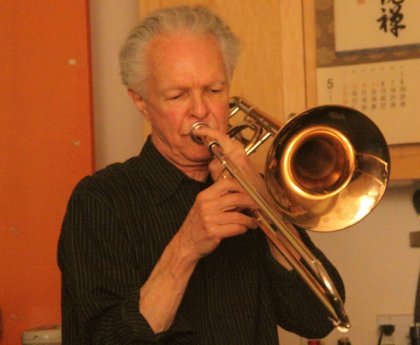
The amazing Stuart Dempster at a house 2015 house concert at Philip Gelb’s Sound and Savor.
In many ways this has been a year of reckoning. I kept my promise to myself to double down on writing this blog and have already reached more viewers than any previous year. I am now averaging a little more than 1000 hits a month from (at last count) 192 countries and have written 74 pieces (compared to 48 last year). I need to keep this up just to be able to stay in touch with similarly minded folks (thanks to all my readers). Add to that the fact that a piece of music I wrote 15 years ago was tracked down by the enterprising Thorson and Thurber Duo. They will provide me with my very first public performance this coming July in Denmark. Please stop by if you can. After having lost all my scores (since 1975) in a fire and subsequently the rest of my work on a stolen digital hard drive I had pretty much let go of that aspect of my life but now…well, maybe not.
Well one of my tasks (little nudges via email have been steadily coming in) is to create a year end “best of” list. Keep in mind that my personal list is tempered by the fact that I have a day job which at times impinges on my ability to do much else such as my ability to attend concerts. However I am pleased to say that I did get to 2 of the three Other Minds concerts this past year. The first one featured all the music for string quartet and string trio by Ivan Wyschnegradsky (1893-1979). The second one featured music by the same composer written for four pianos (with two tuned a quarter tone down). Both of these concerts exceeded my expectations and brought to light an amazing cache of music which really deserves a wider audience. These are major musical highlights for this listener this year.
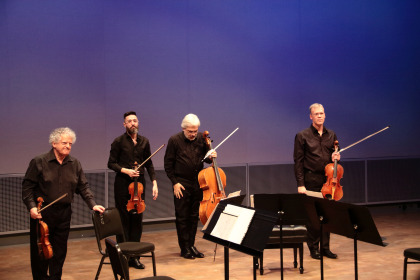
The Arditti Quartet acknowledging the applause at the Wyschnegradsky Concert.
Read the blog reviews for details but I must say that Other Minds continues to be a artistic and musical treasure. Under the leadership of composer/producer/broadcaster Charles Amirkhanian (who turns 75 in January) the organization is about to produce their 25th anniversary concert with a 4 day series beginning in April, 2020. For my money its one of the reasons to be in the Bay Area if you love new music. He is scheduled for a live interview on the actual day of his birthday, January 19th as a guest on his own series, The Nature of Music. This series of live interviews (sometimes with performance material) with composers and sound artists he has hosted since 2016.
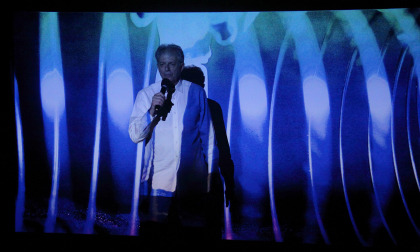
Amirkhanian performing at OM 23 (2018)
Next I will share with you my most obvious metric, how many views my various blog posts got. I have decided to share all those which received more than 100 views.
The winner for 2019 is:
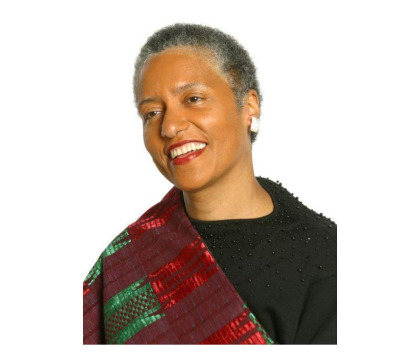
Linda Twine (unknown copyright)
Linda Twine, a Musician You Should Know
A rather brief post written and published in February, 2018 for Black History Month. It was entirely based on internet research and it got 59 views that year. As of this writing in 2019 it has been seen 592 times. I have no idea why this “went viral” as they say. I just hope it serves only to her benefit. Amazing musician.
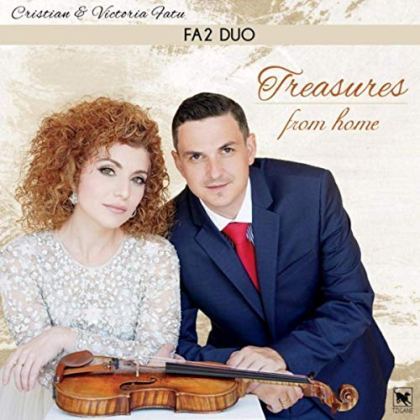
Fatu Duo
Charming little album of lesser known romantic violin and piano pieces played by a husband and wife duo. This self produced album seems to have had little distribution but for some reason people are enjoying reading about it. I only hope that the exposure will boost their sales. This is a fun album.
G. Thomas Allen
Darryl Taylor
John Holiday
The Three Black Countertenors
I’m guessing this is one of my “viral” posts. I wrote it in 2014 and it continues to get escalating hits, 180 this year. The title pretty much says it all. First time three black countertenors appeared on the same stage.
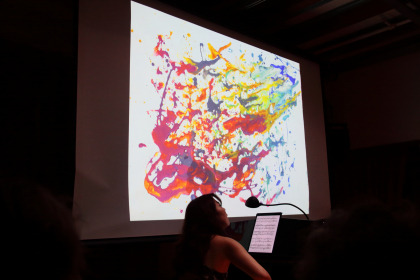
Jenny Q Chai
This concert was an all too brief presentation of some very interesting work. Quite a pianist too. File this artist’s name in your “pay attention” category.
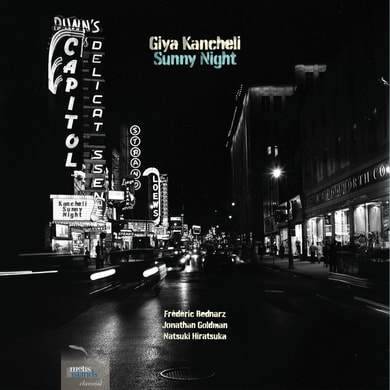
Heavenly Violin and Piano Music by Giya Kancheli
Giya Kancheli (1935-2019), one of the artists we lost this year (I refuse to do that list). If you don’t know his work you should. He wrote I think 7 Symphonies and various concertos, film scores, and other works. He was sort of elected to the “Holy Minimalists” category but that only describes a portion of the man’s work. Very pretty album actually.
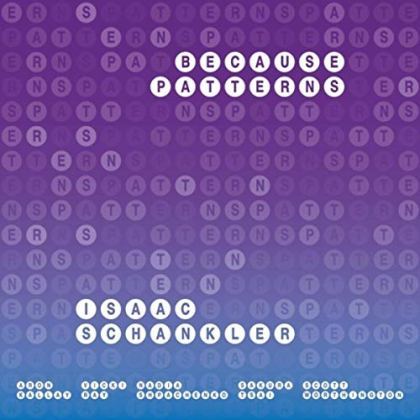
Because Isaac Schankler
This composer new to me, works with electronics, and maintains an entertaining presence on Twitter. Frankly, I’m not sure exactly what to make of this music except to say I keep coming back to it. Very leading edge material.
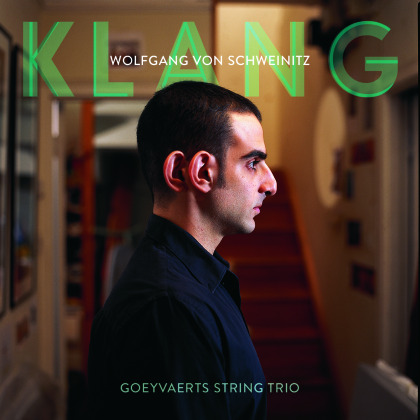
Wolfgang von Schweinitz’s “Klang”
A very different music from that of Schankler listed just above. But another recording to which I find myself returning. Thanks to Mr. Eamonn Quinn for turning me on to this one.
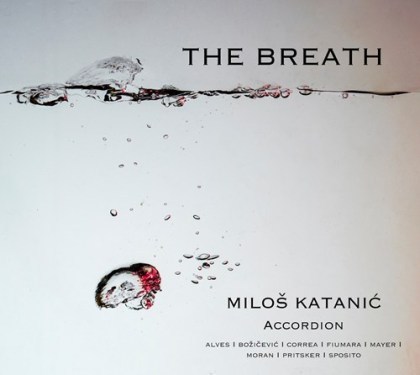
A New Voice for the Accordion
I pretty sure that Gene Pritsker can shoulder at least part of the blame for connecting me with this great new musician The accordion has come a long way and this guy leads it gently forward.
Bernstein’s Age of Anxiety in a new recording
Loved this one. I had only listened to this work three or four times and probably not with adequate attention. Hearing this performance was revelatory. It’s a great work deserving of a place in the standard repertoire/
Charles Dean Dixon (1915-1976)
Carl Van Vechten’s 1961 portrait of Marilyn Horne with her husband Henry Lewis.
Thomas Wilkins (1956- )
Michael Morgan (1957- )
Paul Freeman
James Anderson De Preist (1936-2013)
Black Classical Conductors
Written in 2013, just an occasional piece about black conductors for Black History Month. It’s now been read over 2000 times. It is my most read article. It’s embarrassingly incomplete and in need of a great deal of recent history but that’s a whole ‘nother project.
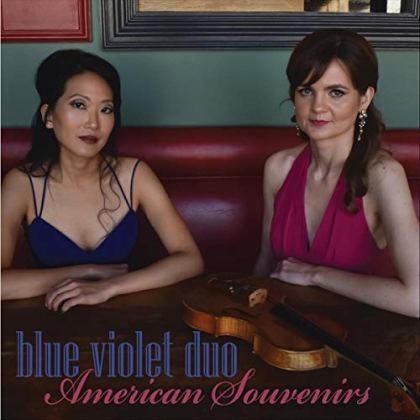
Blue Violet Records
Blue Violet Duo
So glad this disc got a little exposure. Its gorgeous. This disc of jazz influenced classical Americana unearths some real musical gems.

Shakuhachi Ecstasy
OK, I meet this guy at a vegan underground restaurant (whose proprietor is noted Shakuhachi player, Philip Gelb). A little casual conversation, a few vegan courses (Phil can seriously cook), and whaddya know? About a month or so later he sends me this gorgeous self produced set of him playing shakuhachi…but the upshot is that this is the distillation of the artist’s sensibilities filtering his very personal take on the world via his instrument. It has collectible written all over it and that is as much due to the music itself as to the integrated graphics and packaging. You really have to see and hear this trilogy. It got over 100 hits. Thanks to Cornelius Boots and Philip Gelb (musical and culinary concierge).
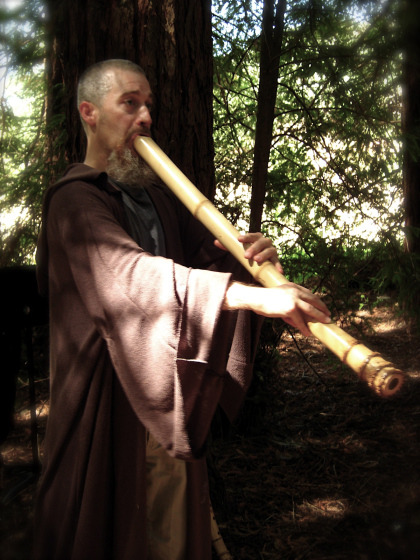
That’s it. Everything else (300 plus articles total with 74 from this year) got less than 100 views.
Personal Favorites
It was a great year for recordings and I listened to more than I did last year. Some may have noticed some experimentation with writing style and length of review here. The problem is that the very nature of my interest is the new and unknown so I have to do the research and have to share at least some of that to hopefully provide some context to potential consumers that will ignite the idea, “gotta check that out” without then boring them to death.
For this last section I will provide the reader with a list in reverse order of the publication of my reviews of CD and streaming releases that prompt this listener to seek out another listen and hopefully draw birds of a feather to listen as well.
Keep yer ears peeled. This young accordion virtuoso is an artist to watch. This was also one of my most read review articles. This guy is making the future of the instrument. Stay tuned.
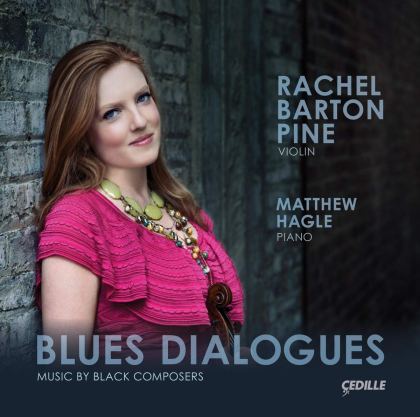
This artist continues to draw my attention in wonderful ways. Her scope of repertoire ranges hundreds of years and she brings heretofore unknown or lesser known gems to a grateful listening audience. Blues Dialogues is a fine example. It is also reflective of the larger vision of the Chicago based Cedille label.
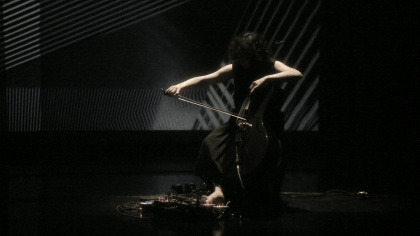
I found myself really taken by this solo debut album by American Contemporary Ensemble (ACME) director Clarice Jensen. In particular her collaboration with La Monte Young student Michael Harrison puts this solo cello (with electronics) debut in a class all its own, This independent release is worth your time.
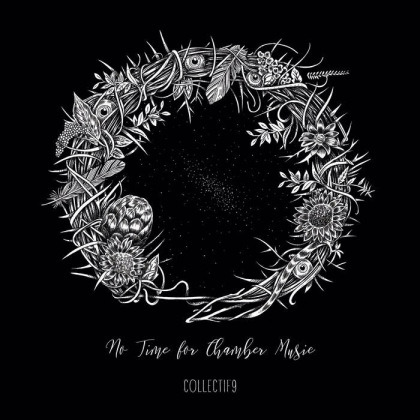
This album of string chamber music arrangements of Mahler is utterly charming. No Time for Chamber Music is a seriously conceived and played homage.

Canadian composer Frank Horvat’s major string quartet opus is a modern classic of political classical music. It is a tribute to 35 Thai activists who lost their lives in the execution of their work. His method of translating their names into a purely musical language has created a haunting and beautiful musical work which is a monument to human rights.
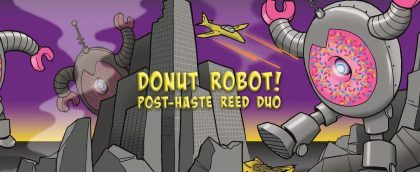
Donut Robot is a playful but seriously executed album. The kitschy cover art belies a really entertaining set of short pieces commissioned for this duet of saxophone and bassoon. Really wonderful album.

It has been my contention that anything released on the Starkland label requires the intelligent listener’s attention. This release is a fine example which supports that contention. Unlike most such releases this one was performed and recorded in Lithuania by the composer. Leave it to the new music bloodhound, producer Tom Steenland to find it. In Search of Lost Beauty is a major new work by a composer who deserves our attention.
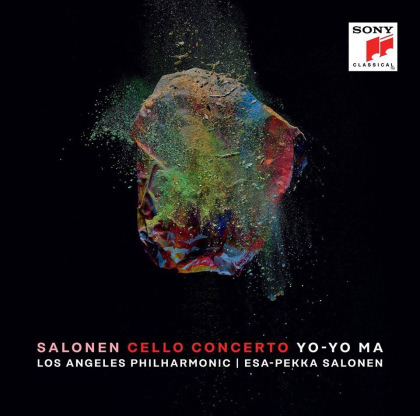
My favorite big label release. This new Cello Concerto from conductor/composer Esa-Peka Salonen restores my faith that all the great music has been written and that all new music is only getting attention from independent labels. Granted, Sony is mostly mainstream and “safe” but banking on the superstar talent of soloist Yo-Yo Ma they have done great service to new music with this release. Not easy listening but deeply substantive.
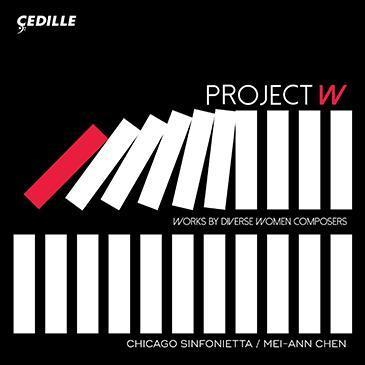
This release typifies the best of Chicago based Cedille records’ vision. Under the guidance of producer James Ginsburg, this local label blazes important paths in the documentation of great music. “W” is a disc of classical orchestra pieces written by women and conducted by the newly appointed woman conductor, Mei-Ann Chen. She succeeds the late great Paul Freeman who founded Chicago’s great “second orchestra”, the Chicago Sinfonietta. Ginsburg taps into Chicago’s progressive political spirit (I guess its still there) to promote quality music, far beyond the old philosophy of “dead white men” as the only acceptable arbiters of culture. Bravo to Mr Ginsburg who launched Cedille Records 30 years ago while he was a student at the University of Chicago.

Become Desert will forever be in my memory as the disc that finally got me hooked on John Luther Adams. Yes, I had been aware of his work and even purchased and listened to albums like Dream in White on White and Songbirdsongs. I heard the broadcast of the premiere of the Pulitzer Prize winning Become Ocean. I liked his music, but this recording was a quantum change experience that leads me to seek out (eventually) pretty much anything he has done. Gorgeous music beautifully performed and recorded.

OK, I’m a sucker for political classical. But Freedom and Faith just does such a great job of advancing progressive political ideas in both social and musical ways. This is a clever reimagining of the performance possibilities of the string quartet and a showcase for music in support of progressive political ideas.

Michala Petri is the reigning virtuoso on the recorder. Combine that with the always substantial production chops of Lars Hannibal and American Recorder Concertos becomes a landmark recording. Very listenable and substantive music.
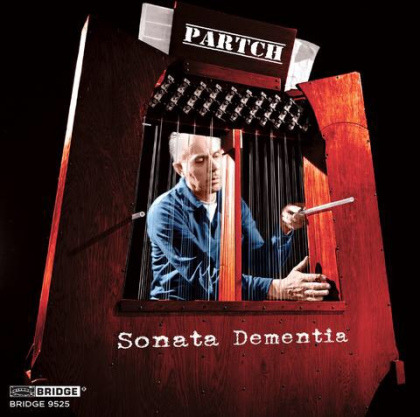
I have admired and sought the music of Harry Partch since I first heard that excerpt from Castor and Pollux on the little 7 inch promotional LP that came packaged with my copy of Switched on Bach. Now this third volume in the encyclopedic survey of the composer’s work on Bridge Records not only documents but updates, clarifies and, in this case, unearths a previously unknown work by the master. Sonata Dementia is a profoundly important entry into the late composer’s discography. I owe PARTCH director, the composer/guitarist John Schneider a sort of apology. I had the pleasure of interviewing him about this album and the planned future recordings of Partch’s music but that has not yet been completed. You will see it in 2020 well before the elections.
The aforementioned Shakuhachi Trilogy is a revelatory collection which continues to occupy my thoughts and my CD player.

Gil Rose, David Krakauer, klezmer and the inventive compositional talent of Mathew Rosenblum have made this album a personal favorite. Lament/Witches Sabbath is a must hear album.

Another Cedille disc makes the cut here, Souvenirs of Spain and Italy. The only actual Chicago connection is that the fine Pacifica Quartet had been in residence at the University of Chicago. But what a fine disc this is! The musicianship and scholarship are astounding. Guitar soloist Sharon Isbin celebrates the 30th anniversary of her founding the department of guitar studies at Julliard, a feat that stands in parallel with the 30th anniversary of the founding of Cedille records. This great disc resurrects a major chamber work by Mario Castelnuovo-Tedesco and presents a definitive program of chamber music for guitar and string quartet. This one has Grammy written all over it.

This New Focus recording was my personal introduction to the music of Du Yun and I’m still reeling. What substance! What force! Dinosaur Scar is quite an experience.
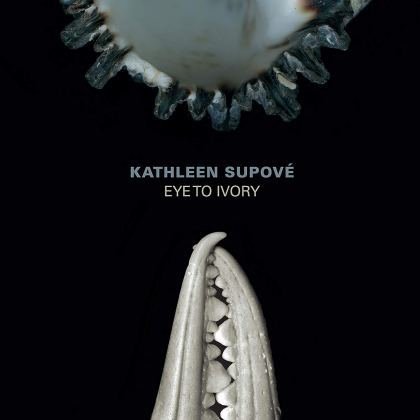
Another Starkland release, this album of music by the great new music pianist is a personal vision of the pianist and the creators of this forward looking repertoire. Eye to Ivory is a release containing music by several composers and championed most ably by Kathleen Supové.
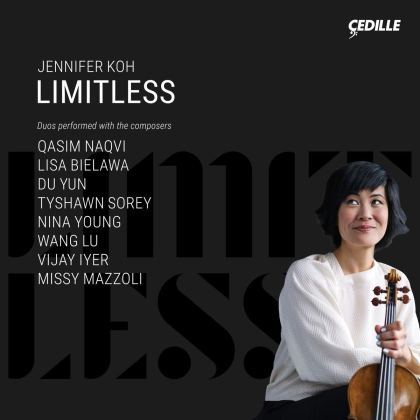
Chicago born Jennifer Koh is one of the finest and most forward looking performers working today. Limitless is a collaboration between a curious but fascinating bunch of composers who have written music that demands and receives serious collaboration from this open minded ambassador for good music no matter how new it is. And Cedille scores another must hear.
Many recordings remain to be reviewed and some will bleed over into the new year so don’t imagine for a second that this list is comprehensive. It is just a personal list I wished to share. Happy listening and reading to all.
My 2019 in the Arts In many ways this has been a year of reckoning. I kept my promise to myself to double down on writing this blog and have already reached more viewers than any previous year.
#accordion#Age of Anxiety#Arditti Quartet#Berliner Philharmonic#black conductors#black countertenors#Black Musicians#black singers#Blue Violet Duo#Cedille Records#Cello#Cello Conceto#Charles Amirkhanian#Chicago Sinfonietta#Clarice Jensen#Collectif9#Cornelius Boots#countertenors#Cristian Fatu#Donut Robot#Du Yun#Eamonn Quinn#Esa-Pekka Salonen#Fatu Duo#Frank Horvat#Giya Kancheli#Goeyvaerts String Trio#Guitar#Gustav Mahler#Harry Partch
1 note
·
View note
Photo

CLASSICAL / 2018-2019
IMANI WINDS
STUDENT GUIDE
PERFORMANCE / DEMONSTRATION
Brandon Patrick George, flute Toyin Spellman-Diaz, oboe Mark Dover, clarinet Jeff Scott, French horn Monica Ellis, bassoon
School Show: January 31
So, What’s Going On?
When you watch five woodwind musicians walk onto a stage, what do you expect?
Perhaps the lilting sounds of composers like Haydn or Schubert?
Maybe the serious, complex music of Beethoven? Or how about the rhythms of African and Latin American music?
If so, it might be hard for you to imagine classical music merging with music that finds its roots in African, Latin American, and even Native American cultures.
So let’s challenge that perception with a performance by Imani Winds, a group of adventurous and passionate instrumentalists. Playing music identified as classical, jazz, contemporary, and everything in-between, Imani Winds bring a boldness to the music they play, bridging the musical gap across countries, generations, and styles. When Imani Winds takes the stage, they rock the house.
First, the basics. What’s a woodwind quintet?
The instruments in a woodwind quintet include a flute, oboe, clarinet, bassoon, and French horn. In woodwind instruments, air travels into a tube and vibrates either by being blown into a hole or across a vibrating reed. On flutes, air is blown across the opening of its mouth, producing sound. On reed instruments, like the clarinet, the air vibrates against a reed on the mouthpiece. Some reed instruments, like an oboe and bassoon, have two reeds, which air vibrates between. In these five instruments, pitch is controlled by covering finger holes or pressing keys that change the length of the tube. Although most woodwinds were originally made from wood—hence their name—they can be made from a variety of materials today, including plastic and metal.
Check out an overview of the woodwind family, and see pictures of the instruments.
But wait!
You might have noticed the quintet includes a French horn, a brass instrument that is played by buzzing into a mouthpiece. The horn is unique in its ability to blend its mellow sound with woodwind instruments and still retain the power of a brass instrument. Because of this, many composers began writing it into classical chamber—or small group—music.
So, where does “world music”—music that isn’t classified as traditional classical music or popular music—come in?
This term “world music” is derived from folk traditions of places that are typically outside of the European-American tradition. Imani Winds, formed in 1997, focuses on representing cultures, composers, and music originating from Africa, Latin America, Asia, and Native American Indian tribes. And the result? Well, these rhythms, tones, and overall sounds can seem unusual to ears used to hearing Western music.
During the performance, Imani Winds will open and close the concert with compositions by its members along with selections from contemporary composers under the theme of “Old Made New.”
Who’s Who

Credit: Pierre Lidar
Imani Winds is one of the most successful and unique chamber music ensembles in the United States. Since its beginning, the quartet has taken a unique path, inserting culturally collaborative repertoire into its performances. The group’s name “Imani” means “faith” in the African language Swahili, emphasizing their connection between the dispersion of African music and the classical music traditionally played in chamber music.
Before they head out on stage, let’s meet the individual musicians:
Brandon Patrick George – flute Toyin Spellman-Diaz - oboe Mark Dover - clarinet Monica Ellis - bassoon Jeff Scott – horn
Listen to an Introduction to Imani Winds (2009):
youtube
Check This Out…
During the performance/demonstration “Old Made New,” the music will include:
Startin’ Sumthin’ by Jeff Scott (b. 1967)
Written by the group’s French horn player, this piece is a modern take on 1890s ragtime. Listen for the syncopated rhythm common in ragtime music. What about it sounds “ragged”? How does this music inspire you to move? Also note times of silence. There are moments in the beginning and towards the end when there's no sound at all, but the energy of the music is still very present.
Watch Imani Winds play Startin’ Sumthin’:
youtube
Want to learn more about ragtime?:
youtube
Quintet for Winds by John Harbison (b. 1938)
This piece has many movements, each of which displays a different characteristic that allows the quintet and individual instruments to shine. Can you find a common thread among them? Listen for the fourth movement—“Scherzo”—where notes are “passed” between the flute, clarinet, and bassoon. Can you catch where the melody leaves one instrument and is picked up by another?
Intrada
youtube
Intermezzo
youtube
Romanza
youtube
Scherzo
youtube
Finale
youtube
Listen to the entire piece played by the Harbison Wind Quintet:
youtube
La Nouvelle Orleans by Lalo Shifrin (b. 1932)
This piece reflects its composer’s jazz and Latin American roots. The title means “New Orleans,” the city considered the birthplace of jazz. This piece is a take on a traditional “jazz funeral march;” not solemn, but rather a celebration of the dearly departed. Listen for the gradual accelerando (speeding up) over the course of the piece, building towards an ending that reflects the New Orleans jazz Second Line brass band tradition. (The “second line” are the people who follow the band in the procession.) What gives the end its big band, jazzy feel?
Listen to Imani Winds play Schifrin’s La Nouvelle Orleans:
youtube
2.6 Pentadactyl by Henry Threadgill (b. 1944)
What does this title even mean?! Honestly, we’re not sure. What we do know is that Imani Winds commissioned this Pulitzer prize-winning composer to write this experimental, provocative piece as part of their mission to feature diverse jazz artists in their body of work. Listen for how each instrument intertwines with one another. Can you decipher which one is which?
The Light is the Same by Reena Esmail (b. 1983)
Based on a poem from the mystic poet Rumi, the piece is written with two scales traditionally used in Indian music. Imani Winds commissioned the piece, which is a picturesque work celebrating the idea that, though we have different beliefs, we all look up and see the same stars at night. Listen for the melody created by the first scale, ominous and sparse, at the beginning of the piece. Can you hear the piccolo and French horn playing a duet before the exciting, syncopated ending?
Learn more about Esmail at her composer site.
Tzigane by Valerie Coleman (b. 1970)
Written by a former Imani Winds flutist, this piece combines a celebration of the Romani (or gypsy) culture with Middle Eastern styles. Like jazz, the composition is written with the intention that the musicians take liberties and play with passion. The piece represents high energy and has beautiful solos that whirl to a frenzied ending. Listen for the driving rhythm behind the melody and watch for the “Low A extension” that bassoonist Monica Ellis inserts into the instrument in order to play a lower note than the bassoon can typically play.
Listen to Tzigane:
youtube
Think About This…
Imani Winds say it represents “the future of wind music and all it can be.” In what ways is the future of music related to its past? How is it different? What role do you think music fulfills in a changing world?
Part of the mission of this quintet is to bridge the gap between more traditional sounds and world music. What new sounds do you hear when listening to their music? How do the new sounds compare to what you think of as “classical” music? How do they compare to music you listen to most often? Are they similar at all?
A woodwind quintet has a surprisingly “full” sound for so few instruments. Just for fun, listen to this arrangement of The Incredibles movie theme by a woodwind quintet. How do these five instruments compare to the theme you’re used to hearing from the movie?
youtube
Take Action: Bridge the Gap
Imani Wind’s mission is to bridge the gap between old and new, traditional and progressive, classical and folk. This can be seen in their repertoire selections, compositions, and even the way they talk about their music. By bridging the gap, music becomes more accessible and more connected.
How can you bridge the gap in your art? Perhaps you meld the old and the new—maybe you perform jazz standards in new ways, or use Picasso as an inspiration in a modern artistic interpretation. Or maybe you combine two art forms to create something all your own. Think about a way to share how you will bridge the gap with family and friends.
Explore More
Go even deeper with the Imani Winds Extras.
You’re ready to hear Imani Winds.
-
Writer: Tori Friedrich
Content Editor: Lisa Resnick
Logistics Coordination: Katherine Huseman
Producer and Program Manager: Tiffany A. Bryant
-

David M. Rubenstein Chairman
Deborah F. Rutter President
Mario R. Rossero Senior Vice President Education
The Fortas Chamber Music Concerts are supported by generous contributors to the Abe Fortas Memorial Fund, and by a major gift to the fund from the late Carolyn E. Agger, widow of Abe Fortas.
Major support for educational programs at the Kennedy Center is provided by David M. Rubenstein through the Rubenstein Arts Access Program.
Kennedy Center education and related artistic programming is made possible through the generosity of the National Committee for the Performing Arts.
© 2019 The John F. Kennedy Center for the Performing Arts
0 notes